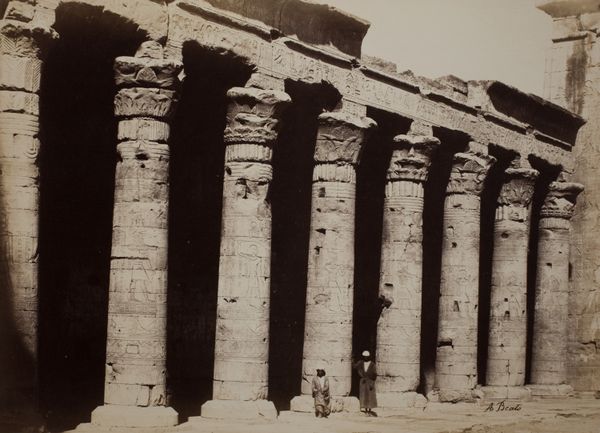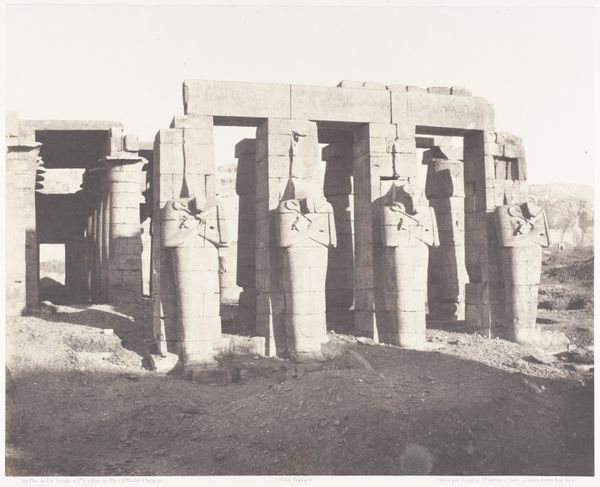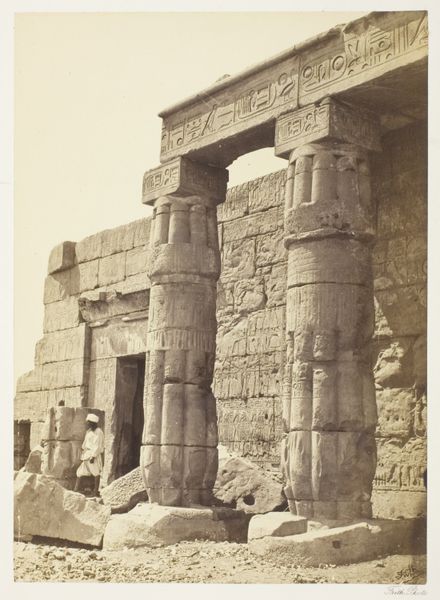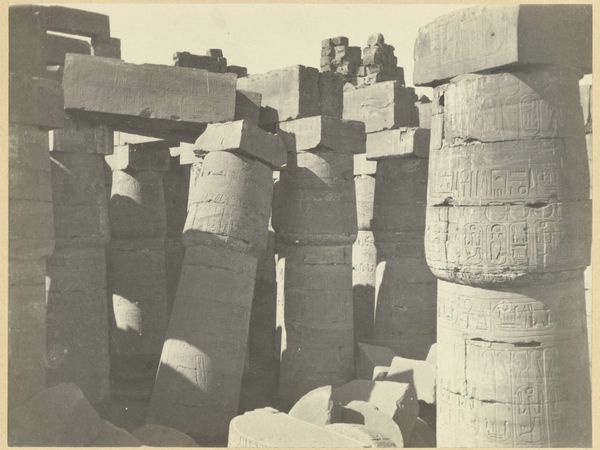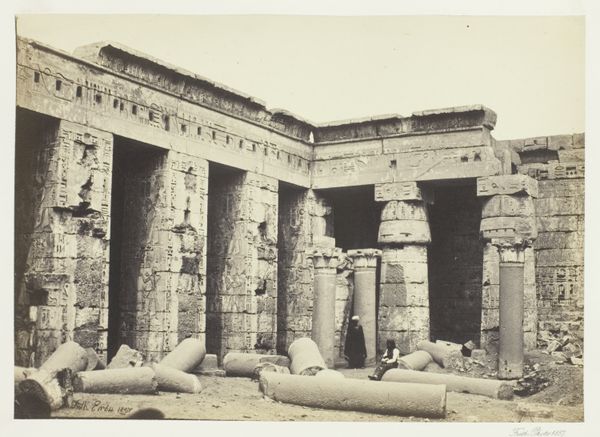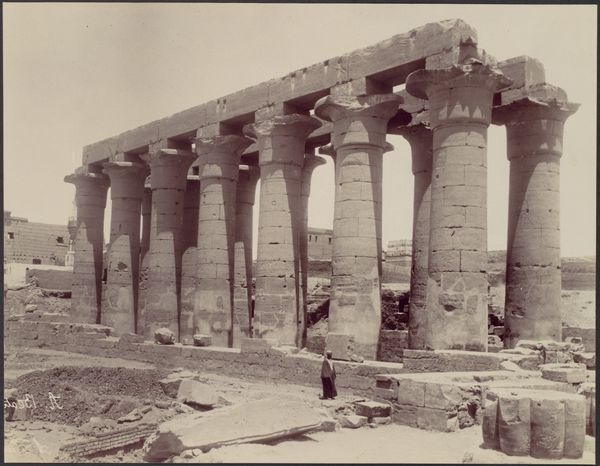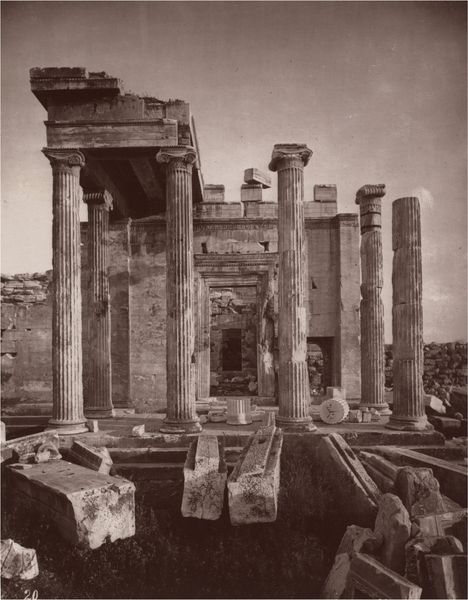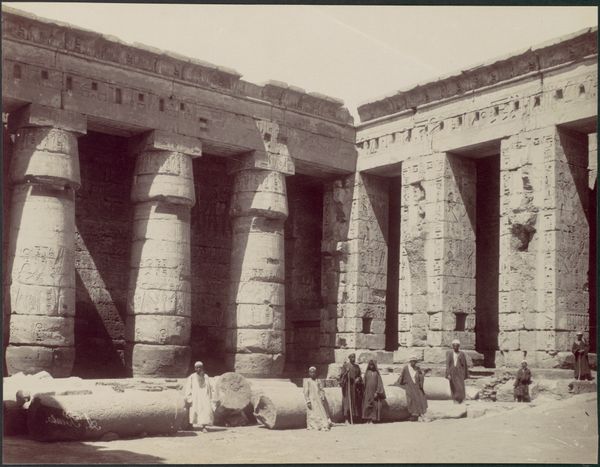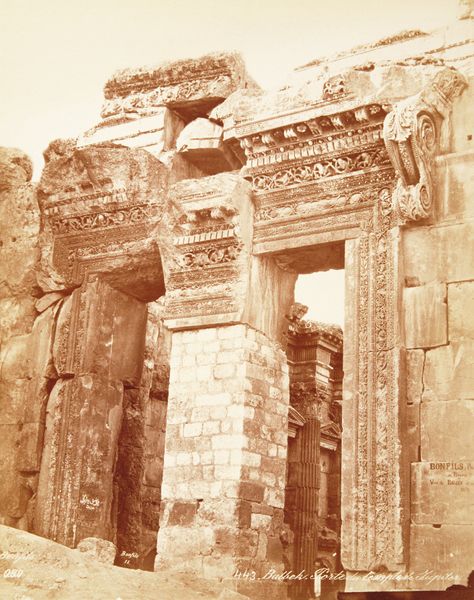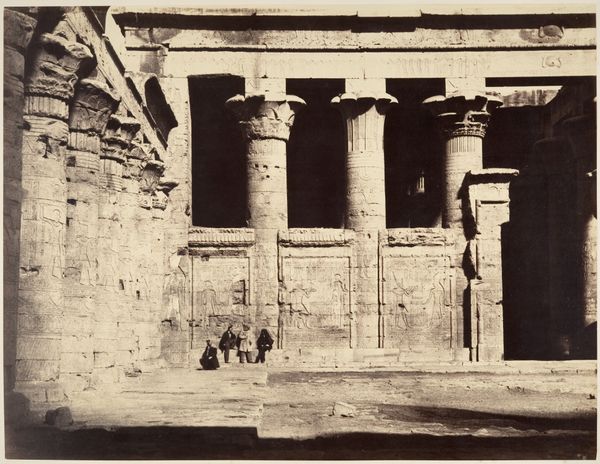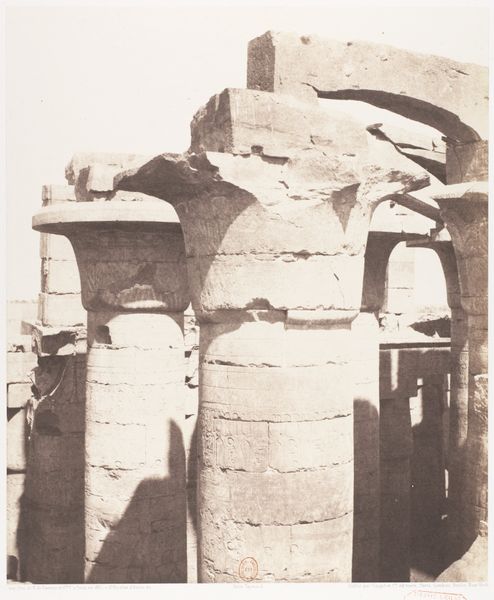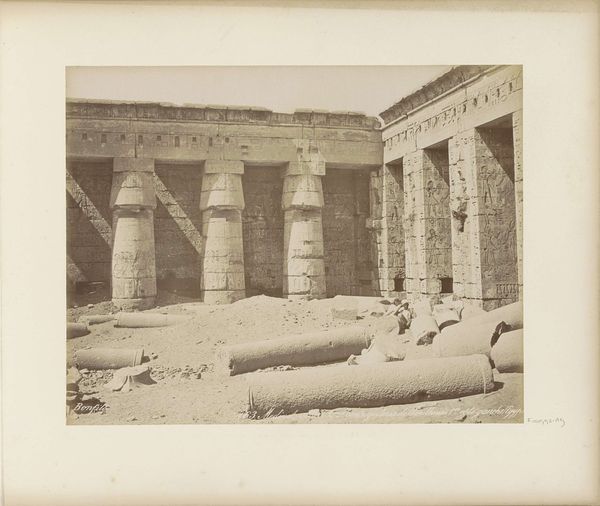
albumen-print, photography, albumen-print
#
albumen-print
#
surveyor photography
#
landscape
#
ancient-egyptian-art
#
historic architecture
#
photography
#
city scape
#
ancient-mediterranean
#
history-painting
#
albumen-print
#
historical building
Dimensions: 10 5/16 x 7 13/16 in. (26.19 x 19.84 cm) (image)14 x 11 in. (35.56 x 27.94 cm) (mount)
Copyright: Public Domain
Editor: This albumen print, an “Untitled” photograph taken by Antonio Beato around the 19th century and held at the Minneapolis Institute of Art, captures monumental columns somewhere in Egypt. What strikes me is the contrast between the immense scale of the architecture and the two human figures, almost swallowed by their surroundings. How do you interpret this work? Curator: The photograph offers a fascinating lens through which to consider 19th-century European encounters with ancient Egyptian architecture. Think about the context: photography was still relatively new. Images like this circulated widely, shaping European perceptions of Egypt and its history. Do you notice anything about *how* the photographer chose to represent the scene? Editor: I see what you mean. It’s not just a straightforward record. The composition, with those figures positioned almost as if they’re exhibits themselves, adds a layer of interpretation. Is the artist pointing to this colonial gaze of superiority? Curator: Precisely! Beato, though of Italian origin, operated within a network of European photographers catering to the Western fascination with the “Orient.” The image subtly reinforces power dynamics, presenting the ancient world as something to be documented, consumed, and possessed visually. These photographs helped solidify Europe’s imagined relationship with a colonised Egypt and became an imperial record of a kind. The choice of printing in albumen also hints at this practice of capturing “the orient” because the paper stock was largely made from the West! Does that connection help your understanding? Editor: Definitely. I was initially drawn to the aesthetic contrast of scale, but now I see how deeply embedded the photograph is in the politics of representation. It’s a beautiful image carrying a complicated legacy. Curator: Exactly. It reminds us that art, even in its seemingly objective forms, is always entangled with social and political forces. There is so much more to this artwork than initially meets the eye.
Comments
No comments
Be the first to comment and join the conversation on the ultimate creative platform.
